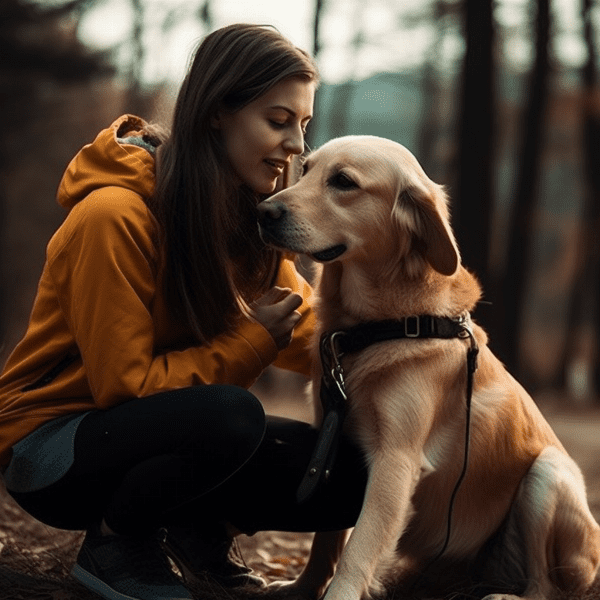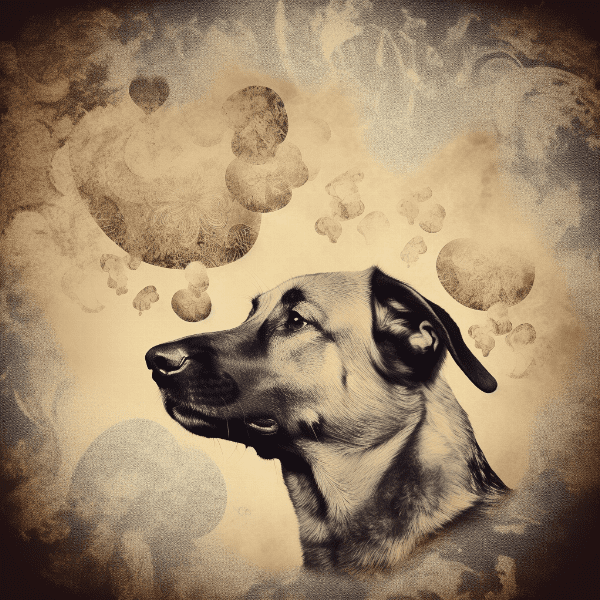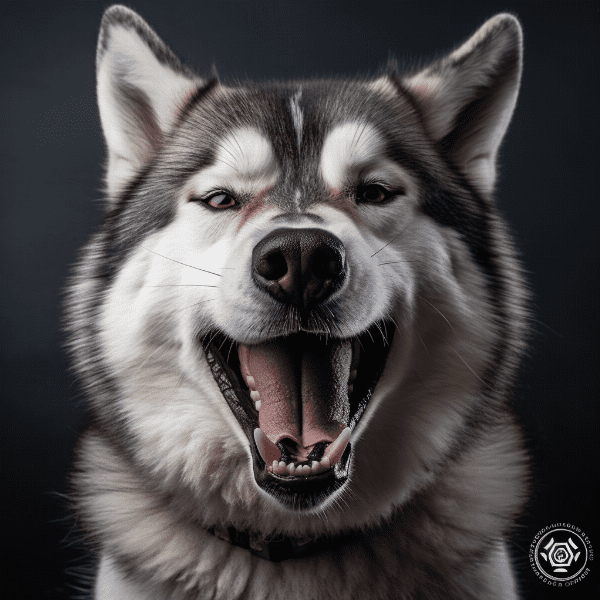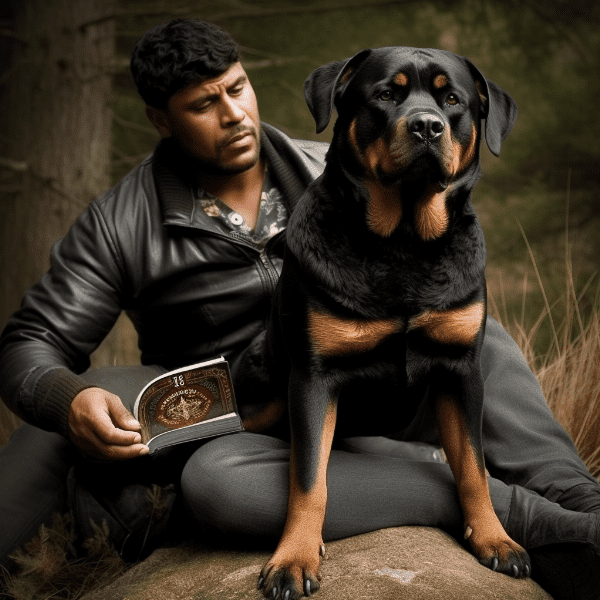Table of Contents
- The Nature of Dog Aggression
- Causes of Aggression in Dogs
- How Growling Fits into Canine Communication
- Recognizing the Warning Signs of Aggression
- Common Triggers for Growling in Dogs
- Addressing Aggressive Behaviors in Dogs
- Working with a Professional Trainer or Behaviorist
- Managing Aggression in the Home
- Preventing Aggression in Dogs
- Building a Stronger Relationship with Your Dog.
The Nature of Dog Aggression
Dogs are social animals and have complex communication systems to convey their needs and emotions to humans and other dogs. However, growling is often seen as a warning sign that a dog may become aggressive.
Types of Dog Aggression
There are several types of aggression in dogs. Some of the most common include:
Fear Aggression
Dogs that are fearful or anxious may exhibit aggression towards people or other animals. This type of aggression is often seen in dogs that have not been socialized properly or have experienced trauma.
Territorial Aggression
Protective Aggression
Dogs are protective of their owners and may become aggressive towards anyone who they perceive as a threat to their family.
Dominance Aggression
Dogs that exhibit dominance aggression may attempt to establish themselves as the alpha dog in their household. This type of aggression can be dangerous and is often seen in unneutered male dogs.
How Aggression Develops in Dogs
Aggressive behavior in dogs can develop due to a variety of factors. Poor socialization, trauma, and a lack of training are some of the most common causes of aggression in dogs. Additionally, certain breeds of dogs may be more prone to aggression than others.
It’s important to note that aggression is not a natural or desirable trait in dogs. Aggressive behaviors can be dangerous and may result in injury to humans or other animals. Understanding the nature of dog aggression is the first step in addressing the problem and preventing future incidents.

Causes of Aggression in Dogs
Aggression in dogs can be caused by a variety of factors, including:
Genetics
Some breeds of dogs are genetically predisposed to aggression. For example, Pit Bulls and Rottweilers are often associated with aggressive behavior. However, it’s important to note that genetics alone are not the only cause of aggression in dogs.
Lack of Training
Dogs that have not received proper training and socialization are more likely to exhibit aggressive behaviors. Without proper training, dogs may not understand appropriate behaviors and may become aggressive as a result.
Medical Issues
Certain medical issues, such as thyroid imbalances or brain tumors, can cause changes in a dog’s behavior and lead to aggression.
Trauma or Abuse
Dogs that have experienced trauma or abuse may develop aggressive behaviors as a result. This aggression can be directed towards humans or other animals.
It’s important to identify the underlying cause of a dog’s aggression in order to address the behavior effectively. A professional dog trainer or behaviorist can help identify the cause and develop a plan to manage and prevent aggressive behaviors in dogs.

How Growling Fits into Canine Communication
Growling is a form of communication for dogs and is often used to convey their emotions or needs. While growling can be a warning sign of aggression, it’s important to understand that not all growling is aggressive.
Playful Growling
Dogs often use growling as part of play behavior. This type of growling is usually accompanied by a wagging tail and a relaxed body posture. Playful growling is a way for dogs to engage with their owners or other dogs and can be a sign of a healthy, active dog.
Warning Growling
Dogs may also use growling as a warning sign to communicate that they are uncomfortable or feeling threatened. This type of growling is often seen when a dog is approached by a stranger or another animal. Warning growling is a way for dogs to communicate their boundaries and should be taken seriously.
Defensive Growling
Defensive growling occurs when a dog feels threatened and is preparing to defend themselves. This type of growling is often seen when a dog feels their territory or family is being threatened. Defensive growling can escalate into aggressive behavior if the threat is not removed.
Aggressive Growling
Aggressive growling is often accompanied by other aggressive behaviors, such as baring teeth or lunging. This type of growling is a warning sign that a dog may attack if the situation is not diffused.
Understanding how growling fits into canine communication is an important part of responsible dog ownership. If your dog is growling, it’s important to assess the situation and determine the underlying cause of the behavior. Working with a professional trainer or behaviorist can help you address the behavior and prevent future incidents.
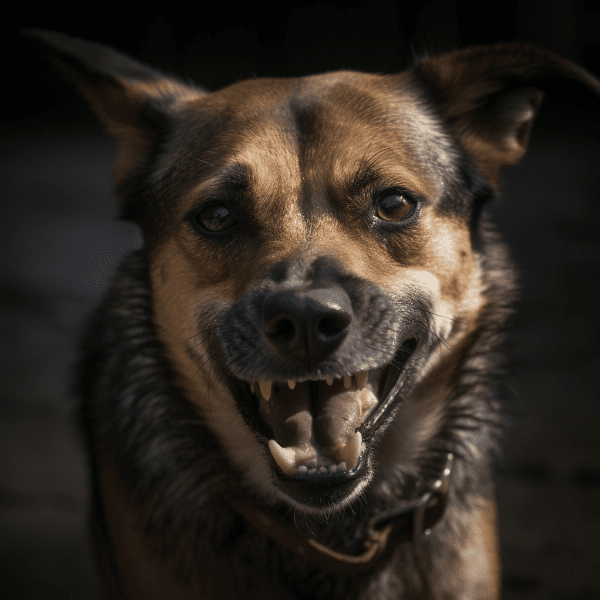
Recognizing the Warning Signs of Aggression
Recognizing the warning signs of aggression in dogs is crucial for preventing incidents and ensuring the safety of both humans and other animals. Here are some common warning signs of aggression to look out for:
Body Language
Dogs often use body language to communicate their emotions and intentions. Signs of aggression can include a stiff body posture, raised hackles, and a curled lip. If a dog’s body language appears tense or defensive, it’s important to proceed with caution.
Growling
As discussed earlier, growling can be a sign of warning or aggression in dogs. If a dog is growling, it’s important to assess the situation and determine the cause of the behavior.
Barking
Excessive barking can be a sign of aggression in dogs. Dogs may bark aggressively when they feel threatened or when they are attempting to establish dominance.
Lunging
Lunging is a common sign of aggression in dogs. If a dog is lunging towards a person or another animal, it’s important to take steps to remove the threat and prevent the behavior from escalating.
Biting
Biting is the most serious form of aggressive behavior in dogs. If a dog bites, it’s important to seek medical attention and address the underlying cause of the behavior.
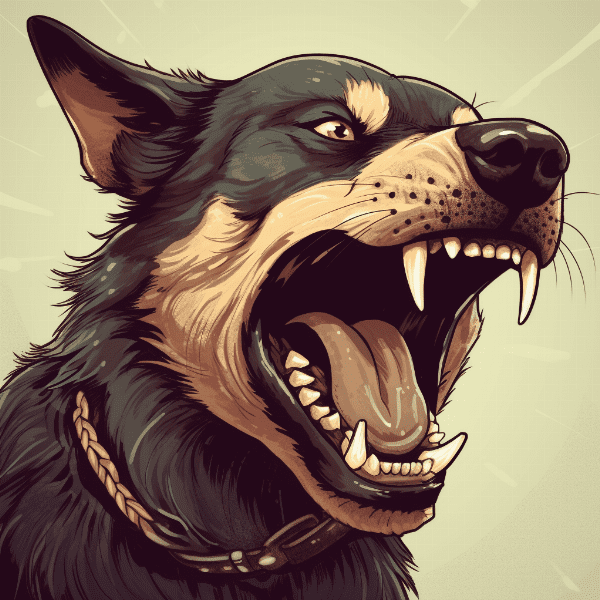
Common Triggers for Growling in Dogs
Growling is a warning sign that a dog may become aggressive, and there are several common triggers that can cause a dog to growl. Understanding these triggers is an important part of managing and preventing aggressive behaviors in dogs.
Fear and Anxiety
Dogs that are fearful or anxious may growl as a way to communicate their discomfort. Common triggers for fear and anxiety in dogs include unfamiliar people or animals, loud noises, and new environments.
Protective Instincts
Dogs are protective of their territory and family, and may growl when they feel that their safety or the safety of their family is threatened. Common triggers for protective instincts include unfamiliar people or animals approaching their home or family.
Pain or Illness
Dogs may growl when they are in pain or feeling ill. This type of growling is a warning sign that the dog may need medical attention.
Dominance and Territorial Behaviors
Dominant dogs may growl as a way to establish their position in a social hierarchy. Territorial dogs may growl when they feel that their territory is being threatened.
Lack of Socialization
Dogs that have not been properly socialized may growl in unfamiliar situations or around unfamiliar people or animals.
Recognizing the common triggers for growling in dogs is an important part of managing and preventing aggressive behaviors. If your dog is exhibiting aggressive behaviors, it’s important to work with a professional trainer or behaviorist to address the behavior and prevent future incidents.
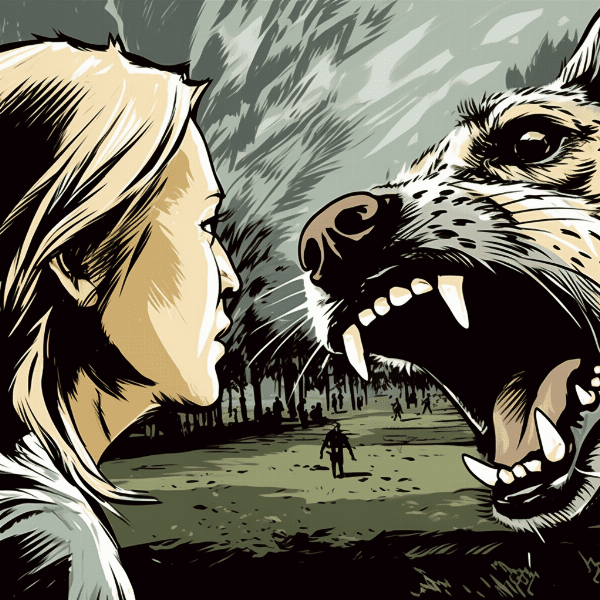
Addressing Aggressive Behaviors in Dogs
Identify the Triggers
The first step in addressing aggressive behaviors in dogs is to identify the triggers that are causing the behavior. This may involve keeping a log of the dog’s behavior and identifying patterns or triggers that are causing the aggression.
Training and Socialization
Training and socialization are important for preventing and managing aggressive behaviors in dogs. Basic obedience training can help establish a positive relationship between the dog and owner, and socialization can help the dog become more comfortable in new environments and around unfamiliar people or animals.
Medication
In some cases, medication may be necessary to manage aggressive behaviors in dogs. This may involve medication to treat underlying medical conditions or medication to address anxiety or other behavioral issues.
Professional Help
Addressing aggressive behaviors in dogs is crucial for ensuring the safety of both humans and other animals. If your dog is exhibiting aggressive behaviors, it’s important to seek professional help and take steps to manage and prevent the behavior from escalating.
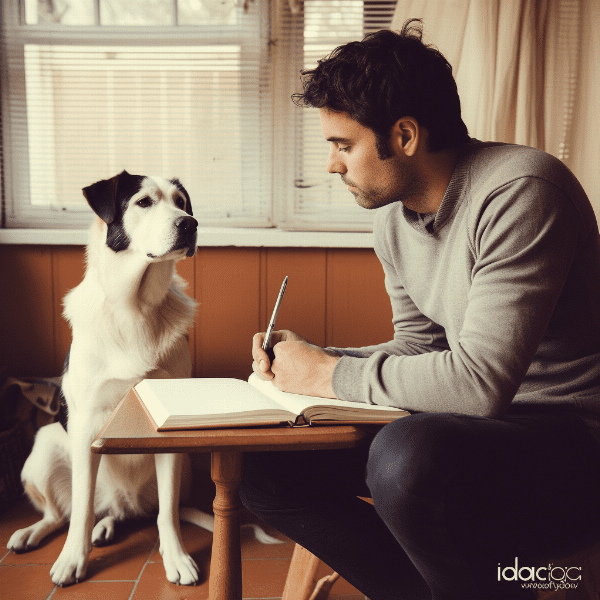
Working with a Professional Trainer or Behaviorist
If your dog is exhibiting aggressive behaviors, it’s important to work with a professional trainer or behaviorist to address the behavior and prevent future incidents. Here are some benefits of working with a professional:
Expertise and Experience
Professional trainers and behaviorists have the expertise and experience to identify the underlying cause of your dog’s aggression and develop a plan to address the behavior. They have a deep understanding of dog behavior and can provide customized solutions to address your specific situation.
Individualized Training
Every dog is unique, and a professional trainer or behaviorist can develop a customized training plan that meets the specific needs of your dog. They can identify the best training techniques and strategies to address your dog’s aggressive behaviors and help you achieve your training goals.
Consistency and Support
Consistency is key in dog training, and a professional trainer or behaviorist can provide the support and guidance needed to maintain consistent training and prevent relapses. They can also provide ongoing support and guidance to ensure that your dog continues to make progress and achieve their training goals.
Preventing Future Incidents
Working with a professional trainer or behaviorist can help prevent future incidents of aggression in your dog. By addressing the underlying cause of the behavior and providing appropriate training and socialization, you can help your dog become a well-adjusted and well-behaved member of your family.
In conclusion, working with a professional trainer or behaviorist is an important step in addressing aggressive behaviors in dogs. They can provide the expertise, individualized training, consistency, and support needed to prevent future incidents and ensure the safety of both humans and other animals.

Managing Aggression in the Home
Aggressive behaviors in dogs can be dangerous and should be managed carefully, especially in the home. Here are some strategies for managing aggression in the home:
Provide a Safe Space
Providing a safe space for your dog is important for managing aggression in the home. This may involve creating a designated area, such as a crate or a separate room, where your dog can retreat if they feel threatened or overwhelmed.
Manage Triggers
Managing the triggers that cause your dog’s aggression is an important part of managing the behavior in the home. This may involve limiting your dog’s exposure to certain people or animals, or modifying their environment to reduce stress and anxiety.
Use Positive Reinforcement
Using positive reinforcement techniques, such as treats and praise, can be effective in managing aggression in the home. This technique can be used to reinforce positive behaviors and encourage your dog to exhibit calm and relaxed behaviors.
Implement Consistent Rules
Consistent rules and routines can help manage aggression in the home. This may involve establishing clear boundaries and rules for your dog, and consistently enforcing those rules.
Work with a Professional
Working with a professional trainer or behaviorist can be helpful in managing aggression in the home. A professional can help identify the underlying cause of the behavior and develop a customized plan to manage and prevent future incidents.
Managing aggression in the home is crucial for ensuring the safety of both humans and other animals. If your dog is exhibiting aggressive behaviors, it’s important to take steps to manage the behavior and prevent future incidents. By providing a safe space, managing triggers, using positive reinforcement, implementing consistent rules, and working with a professional, you can help manage your dog’s aggressive behaviors and ensure a safe and happy home.
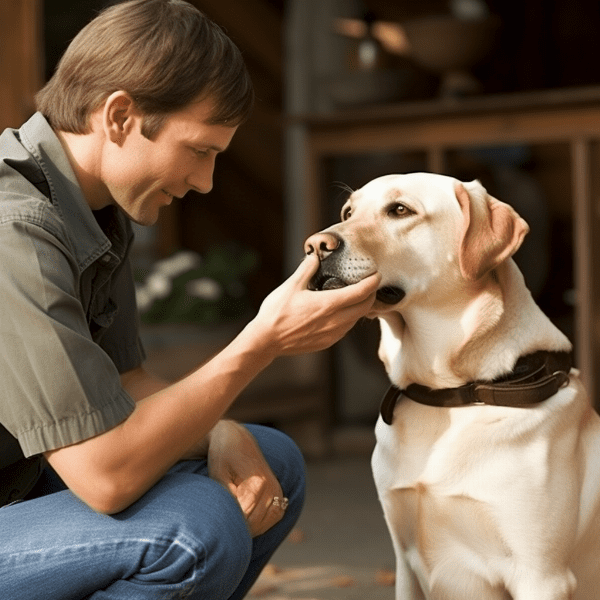
Preventing Aggression in Dogs
Preventing aggression in dogs is an important part of responsible dog ownership. Here are some strategies for preventing aggression in dogs:
Socialization
Socialization is the process of exposing your dog to new people, animals, and environments in a positive and controlled way. Proper socialization can help your dog become more comfortable in new situations and reduce the risk of aggressive behaviors.
Training
Basic obedience training is an important part of preventing aggressive behaviors in dogs. Training can help establish a positive relationship between you and your dog, and can teach your dog appropriate behaviors and commands.
Exercise and Play
Regular exercise and playtime can help reduce stress and anxiety in dogs, which can contribute to aggressive behaviors. Providing your dog with plenty of opportunities for exercise and play can help prevent aggressive behaviors and promote overall health and well-being.
Spaying or Neutering
Spaying or neutering your dog can help prevent aggressive behaviors. Studies have shown that intact dogs are more likely to exhibit aggressive behaviors than spayed or neutered dogs.
Preventing aggression in dogs is an important part of responsible dog ownership. By socializing your dog, providing training and exercise, using positive reinforcement, and spaying or neutering your dog, you can help prevent aggressive behaviors and ensure a happy and healthy relationship with your furry friend.
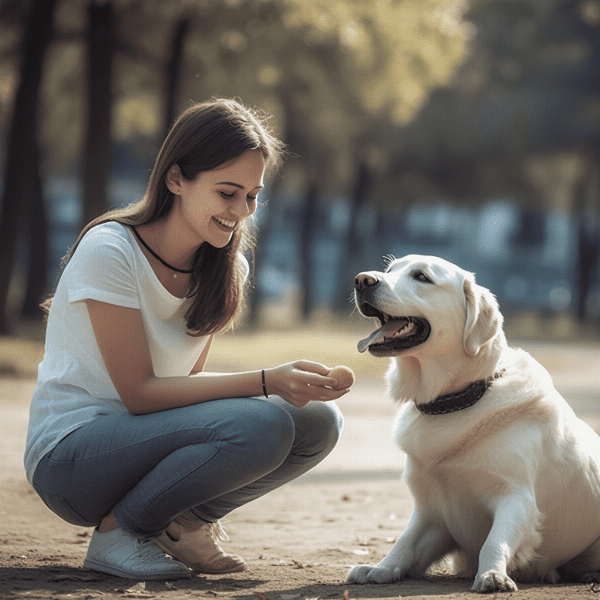
Building a Stronger Relationship with Your Dog.
Building a strong relationship with your dog is key to preventing aggressive behaviors and ensuring a happy and healthy bond between you and your furry friend. Here are some strategies for building a stronger relationship with your dog:
Spend Quality Time Together
Spending quality time together is important for building a strong relationship with your dog. This may involve going for walks, playing together, or simply cuddling on the couch.
Positive Reinforcement
Using positive reinforcement techniques, such as treats and praise, can help strengthen your relationship with your dog. Reinforcing positive behaviors can encourage your dog to continue exhibiting those behaviors and can help establish a positive relationship.
Be Consistent
Consistency is key in building a strong relationship with your dog. Consistently enforcing rules and boundaries can help establish trust and respect between you and your dog.
Show Affection
Showing affection to your dog is important for building a strong bond. This may involve petting, cuddling, or simply speaking in a soft and loving tone.
Understand Your Dog’s Needs
Understanding your dog’s needs and behaviors is crucial for building a strong relationship. This may involve learning about your dog’s breed and temperament, as well as observing their body language and behavior.
By spending quality time together, using positive reinforcement, being consistent, showing affection, and understanding your dog’s needs, you can build a strong relationship with your dog and prevent aggressive behaviors. A strong relationship can also lead to a happier and more fulfilling life with your furry friend.
